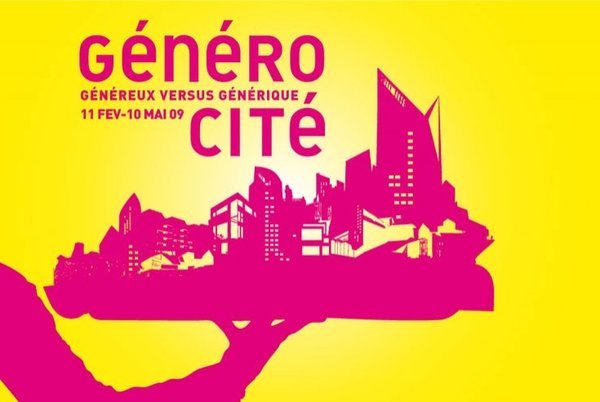GeneroCity
dal 10/2/2009 al 9/5/2009
Segnalato da
10/2/2009
GeneroCity
Cite' de l'Architecture & du Patrimoine, Paris
In response to the Biennale's overall theme of 'Out There: Architecture beyond Building', Francis Rambert proposed a project entitled 'GeneroCity, generous vs. generic' to promote a dialogue on the concept of generosity. Architecture presented with regard to what 'more' it can give to the city and its inhabitants. Around the French Touch collective, the selection presented other talents representing the French contemporary architectural production. This same exhibition is now presented in Paris.

curated by Francis Rambert
Culturesfrance and the Ministry of Culture and Communication – Department of Architecture and Heritage had appointed Francis Rambert as curator of the French pavilion at the 11th International Architecture Exhibition – Venice Biennale. In response to the Biennale’s overall theme of “Out There: Architecture beyond Building”, the curator was proposing a project entitled “GeneroCity, generous vs. generic” to promote a dialogue on the concept of generosity.
Architecture presented with regard to what “more” it can give to the city and its inhabitants. Around the French Touch collective, the selection presented other talents representing the French contemporary architectural production.
This same exhibition is now presented in Paris, inside the galleries of the Cité de l’architecture & du patrimoine at the Palais de Chaillot.
The project
What more can be given? That is the basic question. What more can be offered that isn’t in the programme? That is the issue.
Taking a stand against the trivialisation of cities in a time of globalisation, the pavilion reaffirms the architect’s social role in defining lifestyles and urban habits. By steering the debate towards the value of generosity, it seeks to present the multiple forms of this generosity in architecture and a team creation which, by going beyond mere architectural quality, renews the creation of social bonds as much as the fabric of the city.
Emblematic of this attitude, certain major works appear as pioneers in this area. The Piano & Rogers plan for the Pompidou Centre without taking up all the land so as to offer a public space, or that of Jean Nouvel and Jean‑Marc Ibos for the subsidised housing of Nemausus, according to whom “A beautiful home is a great home” are symbolic of this desire to “give more”.
In a context in which architecture is called on to meet the urgent quest for energy performance and in which budget constraints increasingly limit the range of what is possible, the French pavilion is determined to demonstrate through “GeneroCity” in all its forms, historic and current, what giving more means: more interior space, and more public space.
In terms of contemporary building, the idea of gift or bonus is given its full meaning in a panorama covering both experimental housing designed by Lacaton & Vassal at the Cité Manifeste in Mulhouse and the tramway terminal in Nice recently built by Marc Barani in the intertwining of relief and infrastructure, and including the bus drivers’ building built by Marrec & Combarel in Thiais… And, as this is a matter of “giving without taking anything away from the landscape”, according to Francis Rambert, “the example of the Historial de la Vendée confirms for us the infinite variety of the field of GeneroCity.”
The set-up
In order to keep GeneroCity “contemporary”, the exhibition is featuring a three-tiered presentation: yesterday-today-tomorrow, or revisit-explore-plan.
Some twenty reference projects, from the 1960’s through 2000, including Oscar Niemeyer’s French Communist Party headquarters in Paris, or the star-shaped housing by Jean Renaudie in Ivry, will be presented in the central space, echoing some thirty projects from today (2006-2008), also bearers of this generosity: the Centre Chorégraphique National à Aix-en-Provence by Rudy Ricciotti, the Beausoleil school complex by Calori, Azimi & Botineau, the Atrium building of Jussieu University in Paris by Périphériques, the Simone de Beauvoir walkway in Paris by Dietmar Feichtinger…
The focus on tomorrow will fill the three halls surrounding the central space. 45 future projects and strategies are distributed along three main hubs:
1. Links and new urban practices
2. Interfaces and new hubs
3. Types and new lifestyles
The GeneroCity exhibition presents a total of 100 projects designed and developed at different scales. As a reflection of the liveliness of French creativity, according to Francis Rambert this selection expressed “the regeneration of the architectural debate, outside the school, outside the chapel, at the crossroads of varied and stimulating trends and everyday contexts”. By inviting the French Touch collective, the Ministry of Culture and Communication and Culturesfrance seek to “take into account an entire contemporary movement that is a true creative force with regard to urban issues and the major theme of transforming urban and peri-urban sites”. A choice that is all the more relevant because “this group of individual approaches, assembled together under the banner of Optimism, has the unique characteristic of expressing itself in collective efforts”.
Press contact
Agostina Pinon Tel. 01 58515285 / 06 03 595526 apinon@citechaillot.fr
Cité de l'architecture & du patrimoine
Galerie basse des expositions temporaires
Palais de Chaillot, 1 place du Trocadéro, Paris



